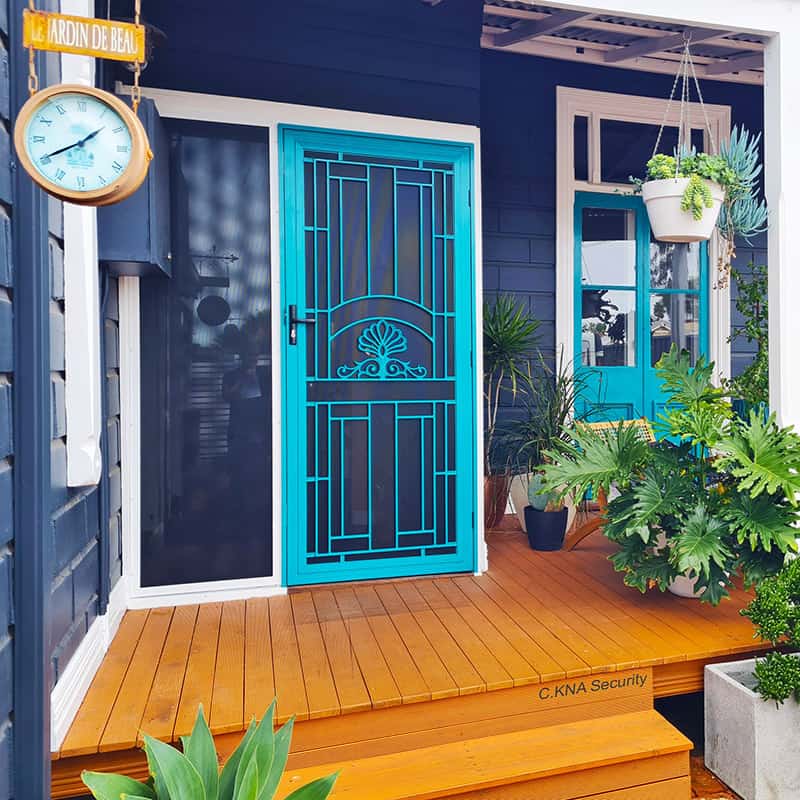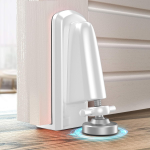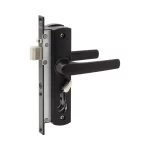Importance of Security Door Installation
Enhancing the safety of your home should be a top priority. Security door installation is a critical step in shielding your property from intruders. A strong, high-quality security door serves as the first line of defense, deterring potential burglars. It’s not just about preventing break-ins; it also adds to your peace of mind, knowing your loved ones and valuables are better protected.
Security doors are not just functional; they also add aesthetic value to your home. With various designs and materials available, you can choose one that complements your home’s architectural style. Moreover, installing a security door can increase your property’s value. Homebuyers often seek secure homes, and a visibly robust security door can be a selling point.
Remember that proper installation is key for a security door to be effective. An improperly installed door can undermine the security features it’s meant to provide. So, commit to the process—by doing it correctly, you ensure your security door fulfills its purpose and offers long-term reliability and protection.
Choosing the Right Security Door
Choosing the right security door is vital for optimal protection. The door should match the level of security you need. Start by considering the material. Steel and wrought iron doors offer high strength. They are hard to break or cut through. Aluminum doors may be lighter but provide less protection. Think about the lock type too. Deadbolts are reliable and tough for intruders to tamper with.
Check the door’s core. Some doors have a solid core that is more dependable for security. Look at the design as well. It should not only be strong but also fit your home’s look. Ensure the door has a sturdy frame. A weak frame can compromise the door’s strength. Choose a finish that withstands weather. This will help the door last longer without damage.
Lastly, consider the door’s energy efficiency. Some doors have insulation properties. They keep your home warm in winter and cool in summer, saving on energy costs.
In summary, when selecting a security door, consider material, locking mechanism, core, design, frame, finish, and energy efficiency. A good balance between aesthetics and security will give the best outcome for your home.
Measuring for Your Security Door
Before you start the security door installation, measuring accurately is crucial. Incorrect measurements can lead to gaps that compromise security. Here’s how to measure effectively:
- Start with the door width. Measure across the door frame from one inside edge to the other at both the top and bottom. Use the wider measurement as your guide.
- Measure the door height. Do this from the threshold to the top of the door frame inside edge. If there’s any difference between the left and right sides, record the larger number.
- Account for the door jamb. Check the depth of your door jamb, from the front to the back of the frame, to ensure the new door will fit.
- Note any irregularities in the frame. If your door frame is not perfectly square, adjustments during installation may be needed to ensure a snug fit.
Remember to double-check all measurements and always measure twice to avoid mistakes. Once you have these measurements, you’ll be ready to select a security door that fits your doorway precisely.
Essential Tools and Materials for Installation
Preparing for your security door installation is crucial. You will need the right tools and materials to ensure a smooth process. Gather these items before you begin:
- Tape Measure: For precise measurements of your doorway.
- Level: To make sure the security door fits squarely.
- Drill: Necessary for pre-drilling holes and installing screws.
- Screws and Anchors: To securely fasten the door frame into place.
- Screwdriver: For tightening screws during installation.
- Hammer: May be needed to adjust framing or for other minor adjustments.
- Wrench: To tighten bolts on the security door.
- Hacksaw: If cutting is required for fitting the door or hardware.
- File: To smooth out any rough edges from cuts made.
- Caulk and Caulking Gun: For sealing gaps and ensuring the door is weathertight.
- Safety Glasses and Gloves: Protect your eyes and hands during the install.
Ensure you have each of these tools and materials on hand to avoid interruptions once you start. Keep in mind that some security doors come with their own hardware. Check the manufacturer’s guidelines for any additional tools specific to your security door model. Proper preparation makes installation smoother and helps to prevent issues from arising.
Step-by-Step Guide to Installing a Security Door
Now that you have your tools, materials, and measurements ready, it’s time to start the security door installation. Follow these steps to ensure a secure fit:
- Position the Door Frame: Place the new security door frame within the doorway. Use a level to check if it sits square. Adjust as needed until it is perfectly vertical and horizontal.
- Mark the Holes: With the frame in place, mark where you need to drill the holes. Check twice before drilling to avoid errors.
- Pre-Drill Holes: Using a drill, create holes at your markings. Be careful to drill to the correct depth for the screws and anchors.
- Secure the Frame: Insert anchors into the holes. Then, align the frame and screw it in place. Use the wrench to tighten all bolts.
- Install the Door: Once the frame is secure, hang the door on its hinges. Ensure it swings open and closed smoothly.
- Affix Door Hardware: Attach the lockset, handle, and any additional hardware according to the manufacturer’s instructions.
- Final Checks: Step back and review your work. Check that the door locks properly and there are no gaps. Use the level again for a final check on the door’s alignment.
- Seal the Frame: Apply caulk around the outside of the frame to seal any gaps. This makes your door weathertight and adds extra security.
Remember, a tight, secure fit is essential for your security door to provide maximum protection. Don’t rush the process and ensure each step is done with care. If problems occur, refer to the troubleshooting section of this guide. Happy installation!
Troubleshooting Common Installation Issues
Even with careful planning, you may encounter issues during security door installation. Here are common problems and how to fix them:
Door Not Level
If the door isn’t level, it can cause issues with closing and locking. Use a level to check the frame’s alignment. Adjust the hinges or frame to level the door properly.
Incorrect Drill Holes
Drill holes that are off-mark can weaken the installation. Fill incorrect holes with wood filler or concrete patch. Re-drill the holes in the correct position for a strong hold.
Gaps Around the Door
Gaps can compromise security and energy efficiency. If you notice gaps, adjust the door’s placement or add weather stripping. Sealing gaps helps improve insulation and security.
Door Not Locking
A door that won’t lock can be a major security risk. Check the alignment of the lock with the strike plate. Make adjustments as needed for a smooth locking mechanism.
Frame Issues
A frame that’s not sturdy can undermine the door’s security. Make sure the screws are tight. Add extra screws or reinforcement plates if the frame needs more stability.
Remember, these troubleshooting tips should help address common installation problems. If issues persist, consult professional help to ensure the security of your installation.
Maintenance Tips for Your Security Door
After successful security door installation, maintaining your new security door is vital for long-lasting protection. Here are crucial maintenance tips to keep your security door in top condition:
- Regular Cleaning: Dirt and debris can accumulate on your security door, especially if it’s exposed to the elements. Wipe it down with a soft cloth and gentle cleaner to maintain its appearance and functionality.
- Check the Hinges: Over time, the door’s hinges may loosen. Tighten any loose screws with your screwdriver to ensure the door operates smoothly.
- Lubricate Moving Parts: To prevent squeaking and sticking, apply lubricant to the hinges and locks periodically. Choose a lubricant that’s suitable for outdoor use.
- Inspect the Locks: Locks are critical for security. Test them frequently to make sure they engage and disengage properly. If you notice any issues, address them promptly.
- Look for Rust and Wear: Examine your security door for signs of rust or wear, especially if made of metal. If you find rust, treat it immediately to prevent further damage.
- Check Weather Stripping: The stripping seals gaps and improves energy efficiency. Replace it if you notice it’s becoming worn or damaged.
- Tighten the Frame: As with the hinges, the door frame can also become less secure over time. Tighten any bolts with your wrench to keep the frame stable.
- Touch Up Paint: Scratches and chips can expose metal to moisture and lead to rust. Touch up any imperfections with weatherproof paint.
Regular checks and routine maintenance can save costs on repairs and extend the life of your security door. Commit to a maintenance schedule to ensure your door provides optimal security year-round.
Enhancing Security Beyond the Door Installation
Your security door installation is a significant step in protecting your home. However, enhancing security doesn’t stop there. To ensure your home is as secure as possible, consider the following additional measures:
- Install Security Cameras: Place cameras at key entry points. They deter criminals and help you monitor activity.
- Use Motion-Detecting Lights: Illuminate dark areas around doors. Intruders avoid well-lit areas.
- Upgrade Window Locks: Secure windows with good locks. They are common entry points for burglars.
- Set Up an Alarm System: Alarms alert you to intrusions. They scare off would-be intruders.
- Create a Safe Room: Have a secure room for emergencies. It adds another layer of protection.
- Use Timers on Lights: Make it look like someone is home. Use timers to switch lights on and off.
- Get to Know Neighbors: Neighbors can help keep an eye on your place. Community vigilance is a strong deterrent.
- Maintain Your Yard: Keep bushes and trees trimmed. Don’t give intruders places to hide.
By integrating these strategies with a sturdy security door, you enhance your home’s overall safety. Always stay alert and invest in quality security enhancements. Remember, proactive measures are the best defense against home invasions.





